This document discusses openness in learning and education. It defines key concepts like open learning, open educational resources (OER), MOOCs (massive open online courses), and open access. Open learning aims to remove barriers and provide flexibility for learners. OER are educational materials that can be freely used and shared under open licenses. MOOCs make university-level courses available online to any learner for free. Open access aims to make academic research articles freely available. The document questions how institutions can develop strategies for open education and new models of online learning.
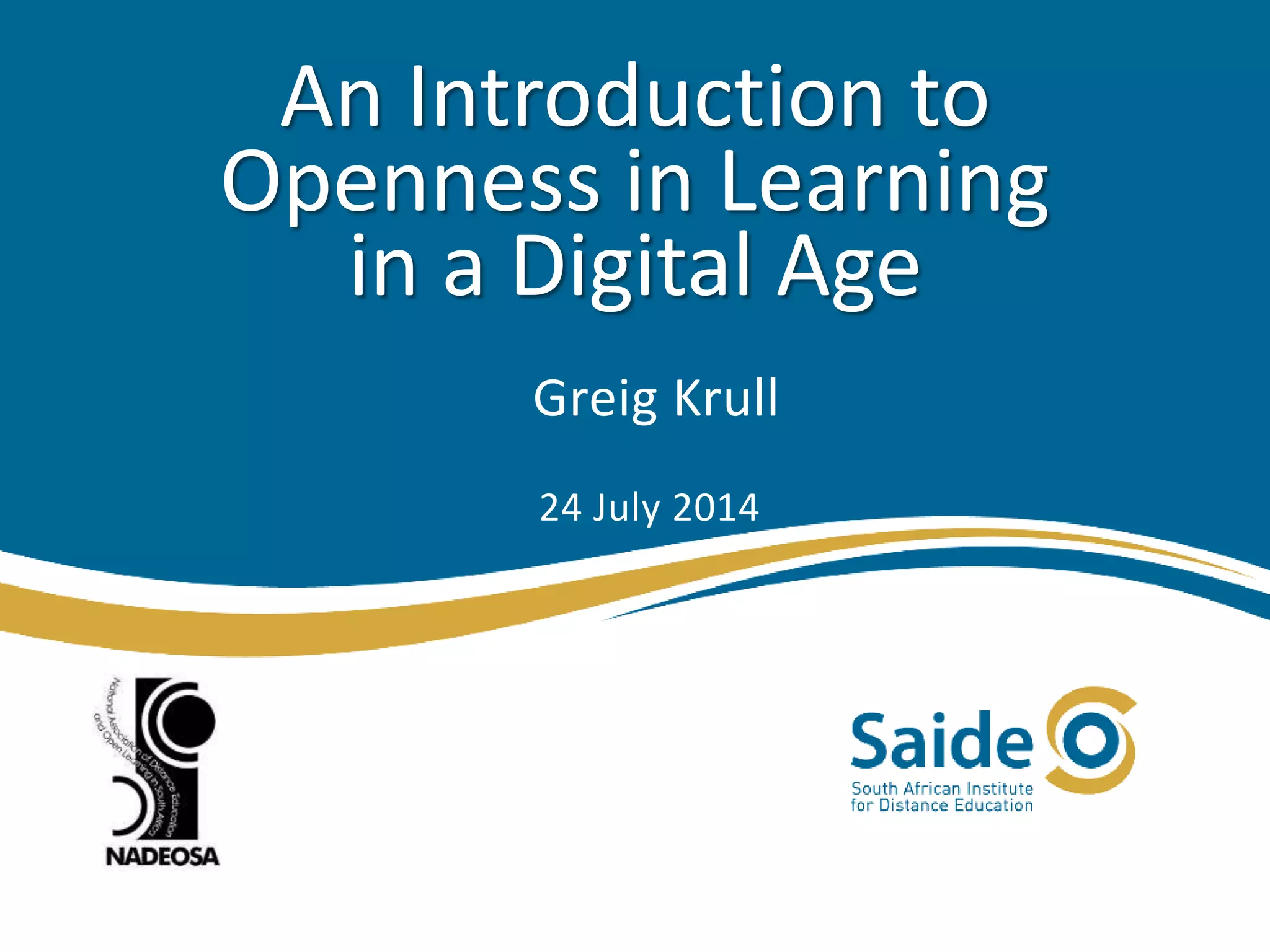
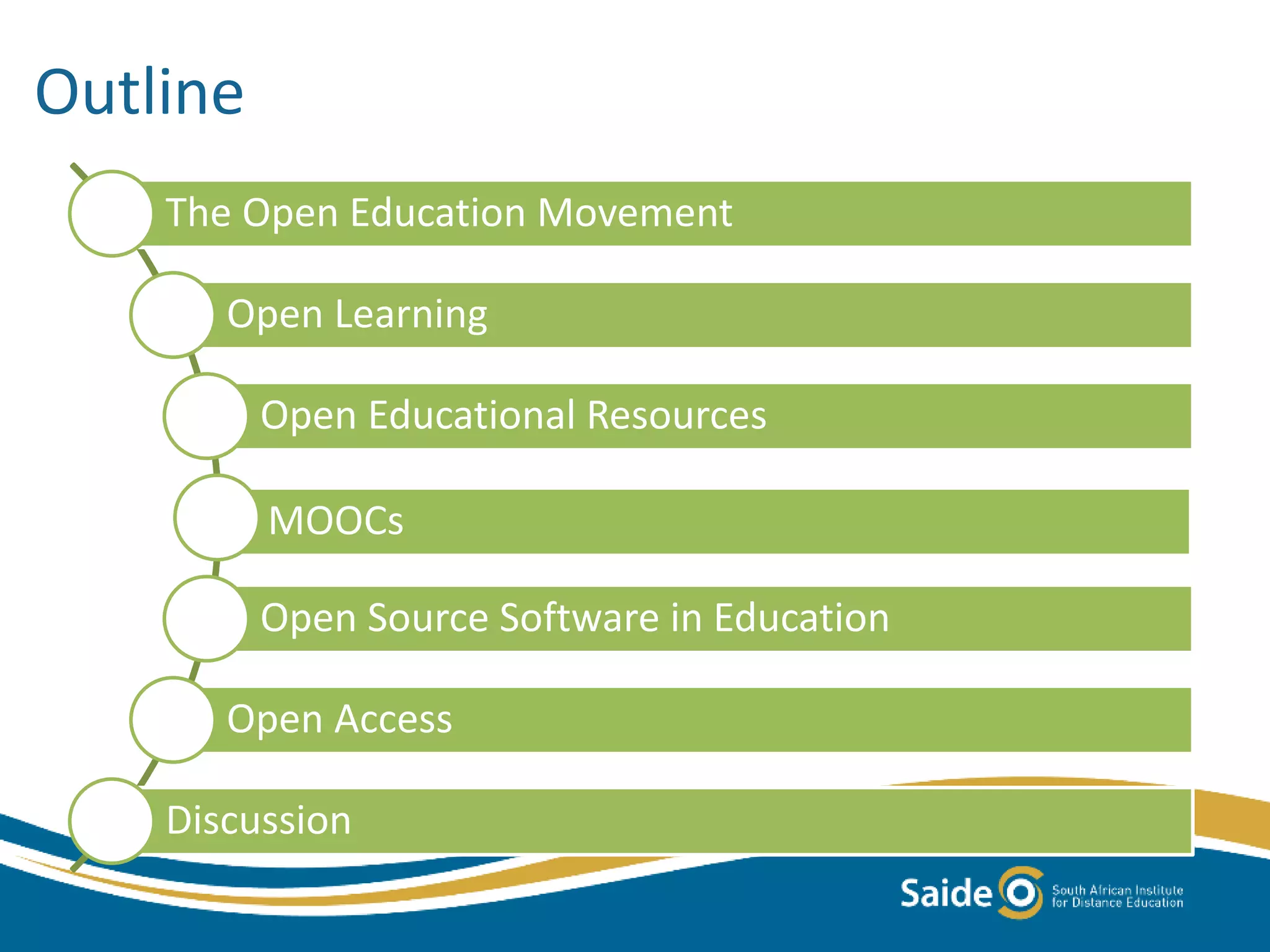
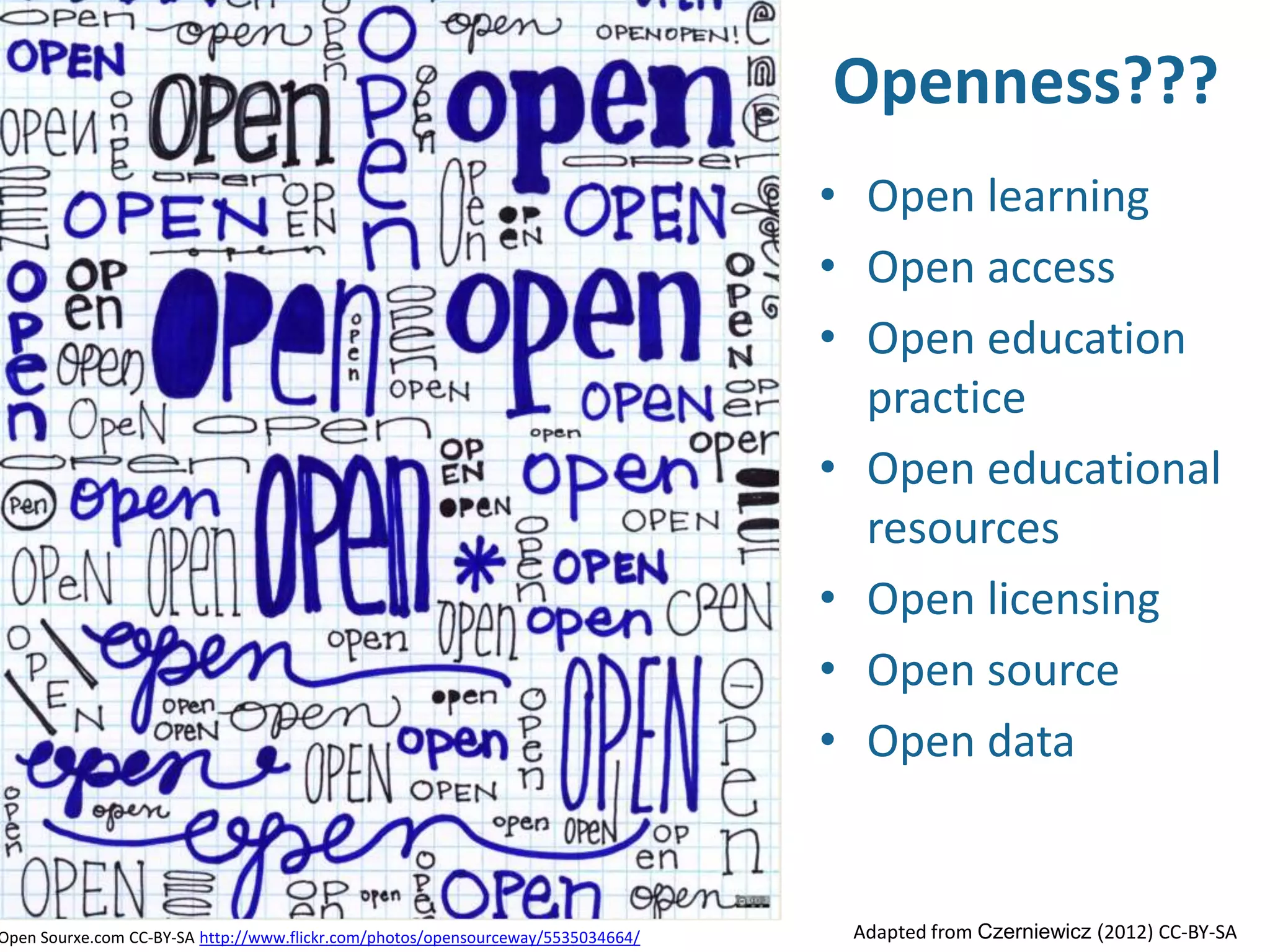
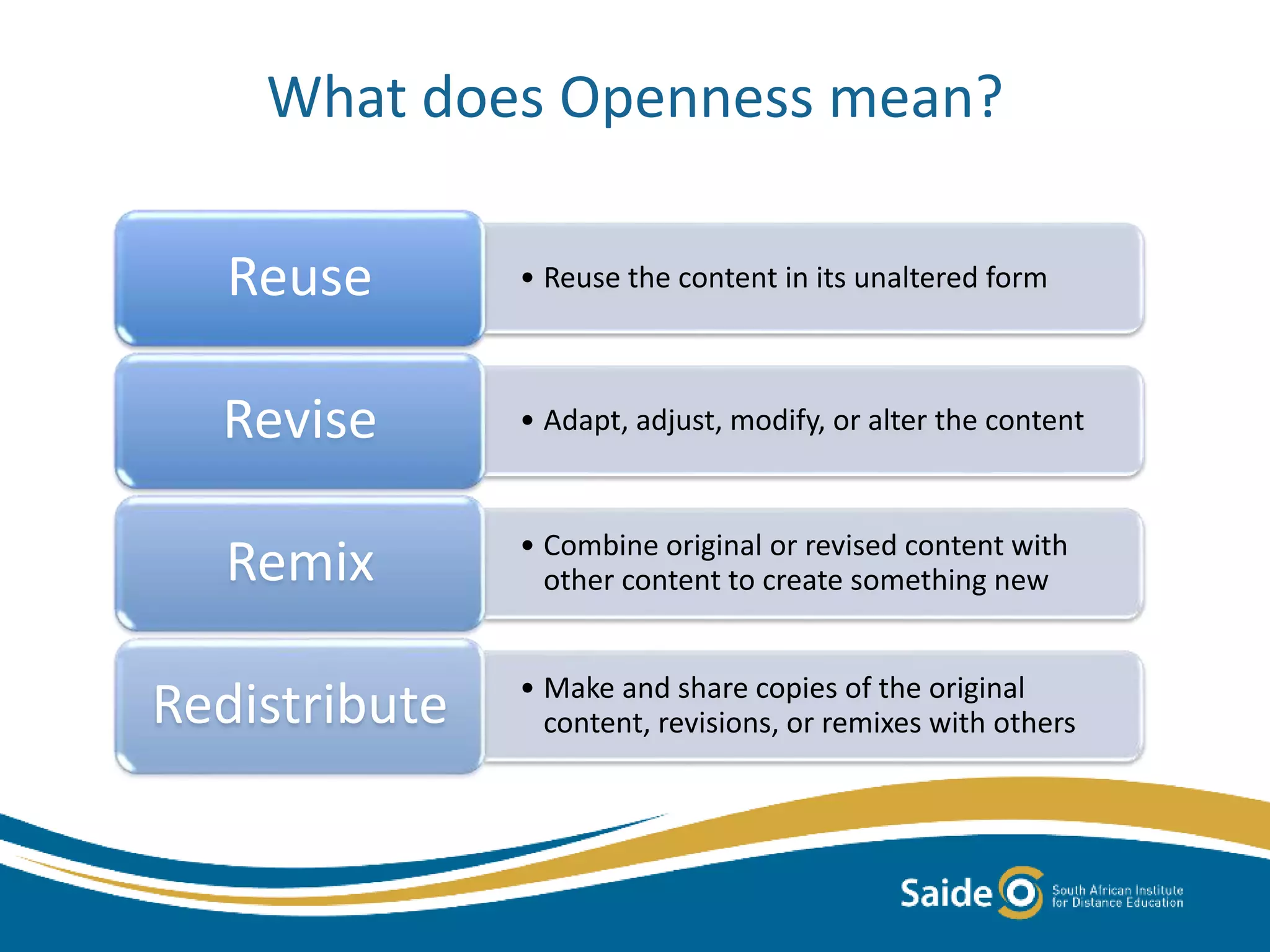
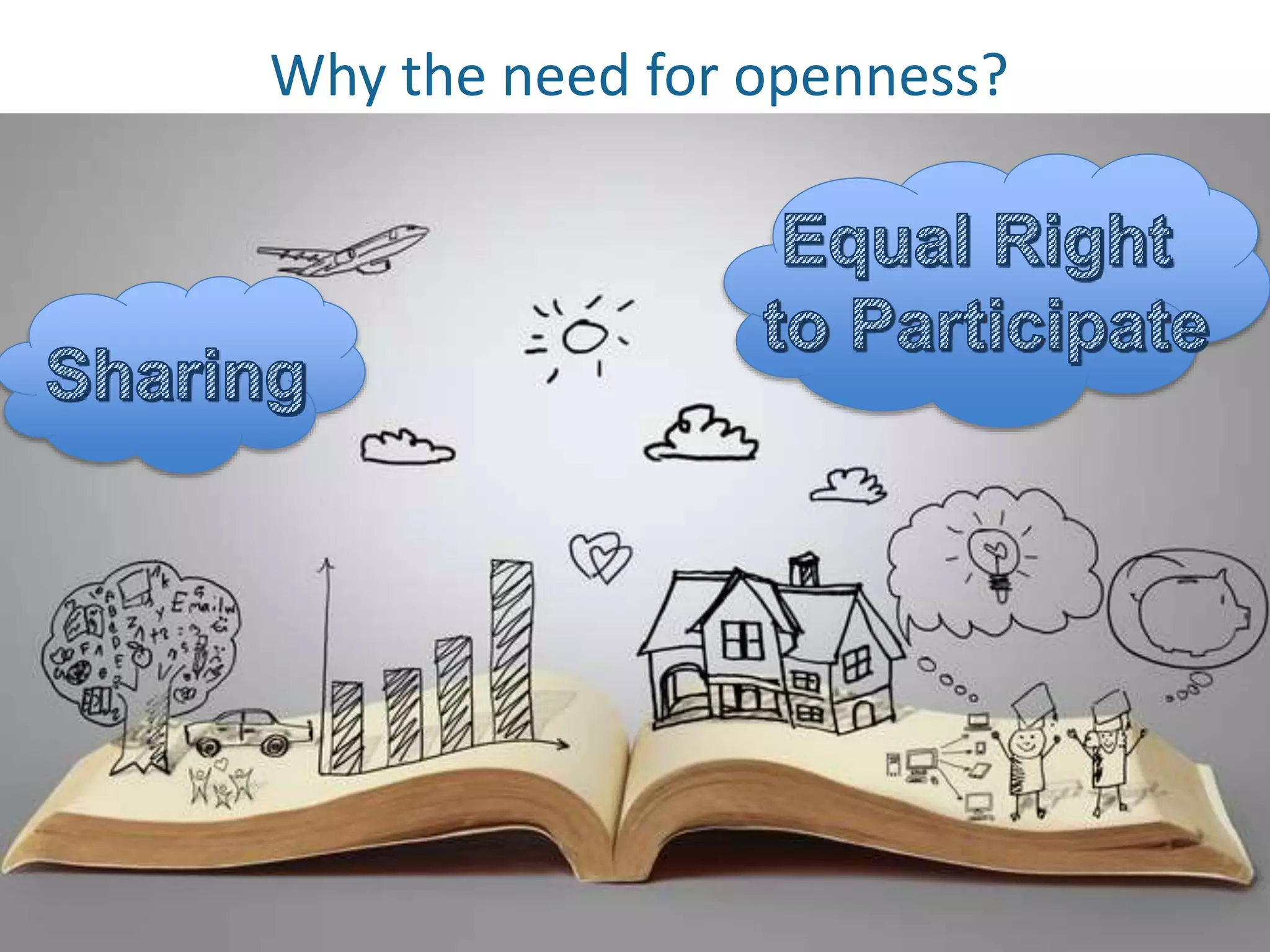

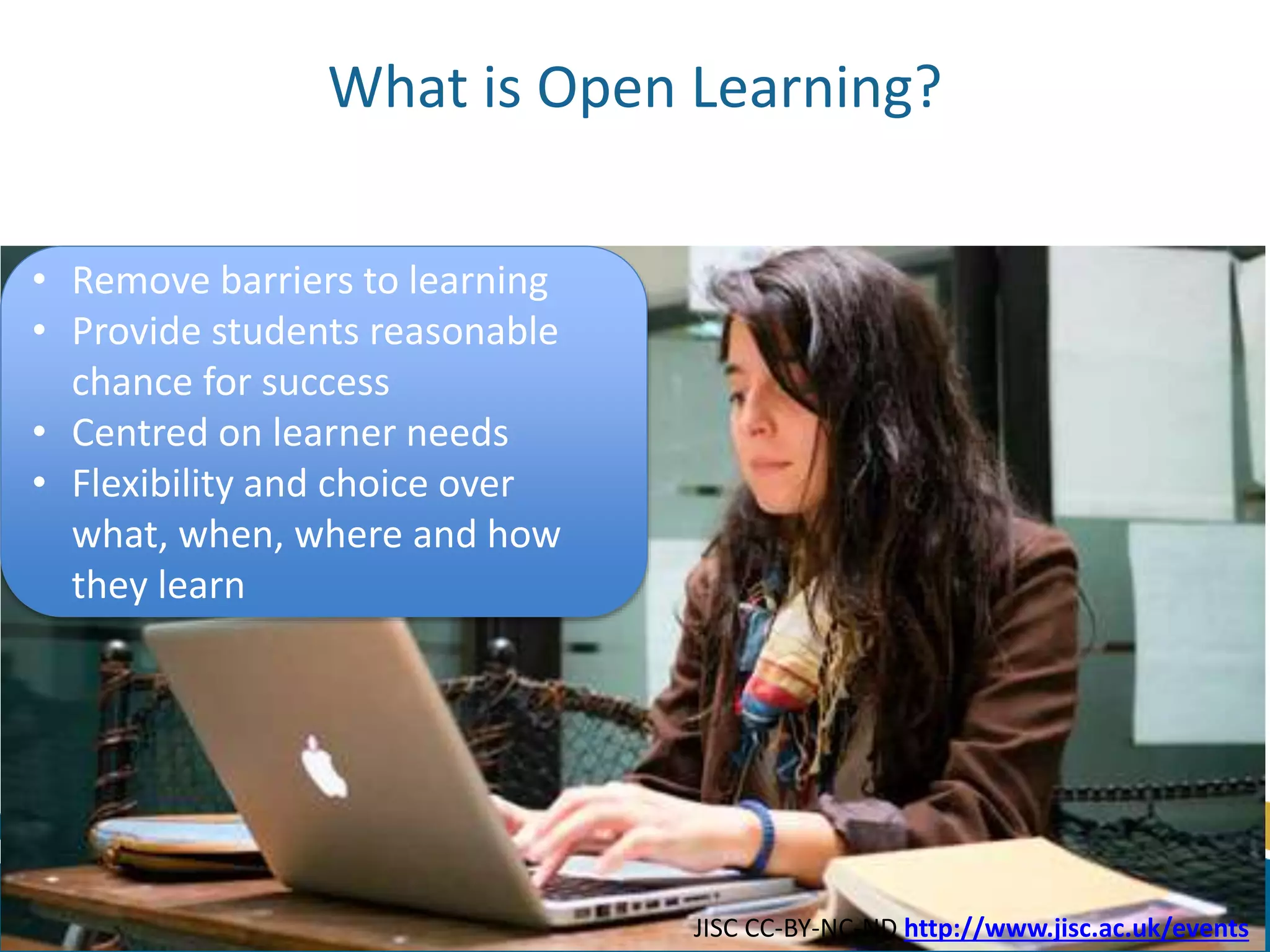
![Principles for Open Learning
Saide (2012) [CC-BY]
Opportunities and capacity
for lifelong learning
Learner-centred
Active engagement leading
to independent and critical
thinking
Flexible provision: Learners
increasingly determine
where, when, what and
how they learn
Recognise prior learning
and experience
Conditions for fair chance of
learner success through
learner support,
contextually appropriate
resources and sound
pedagogical practices](https://image.slidesharecdn.com/9xwsjpcrrxz0rscdwjil-140624040656-phpapp01/75/An-Introduction-to-Openness-in-Online-Learning-8-2048.jpg)
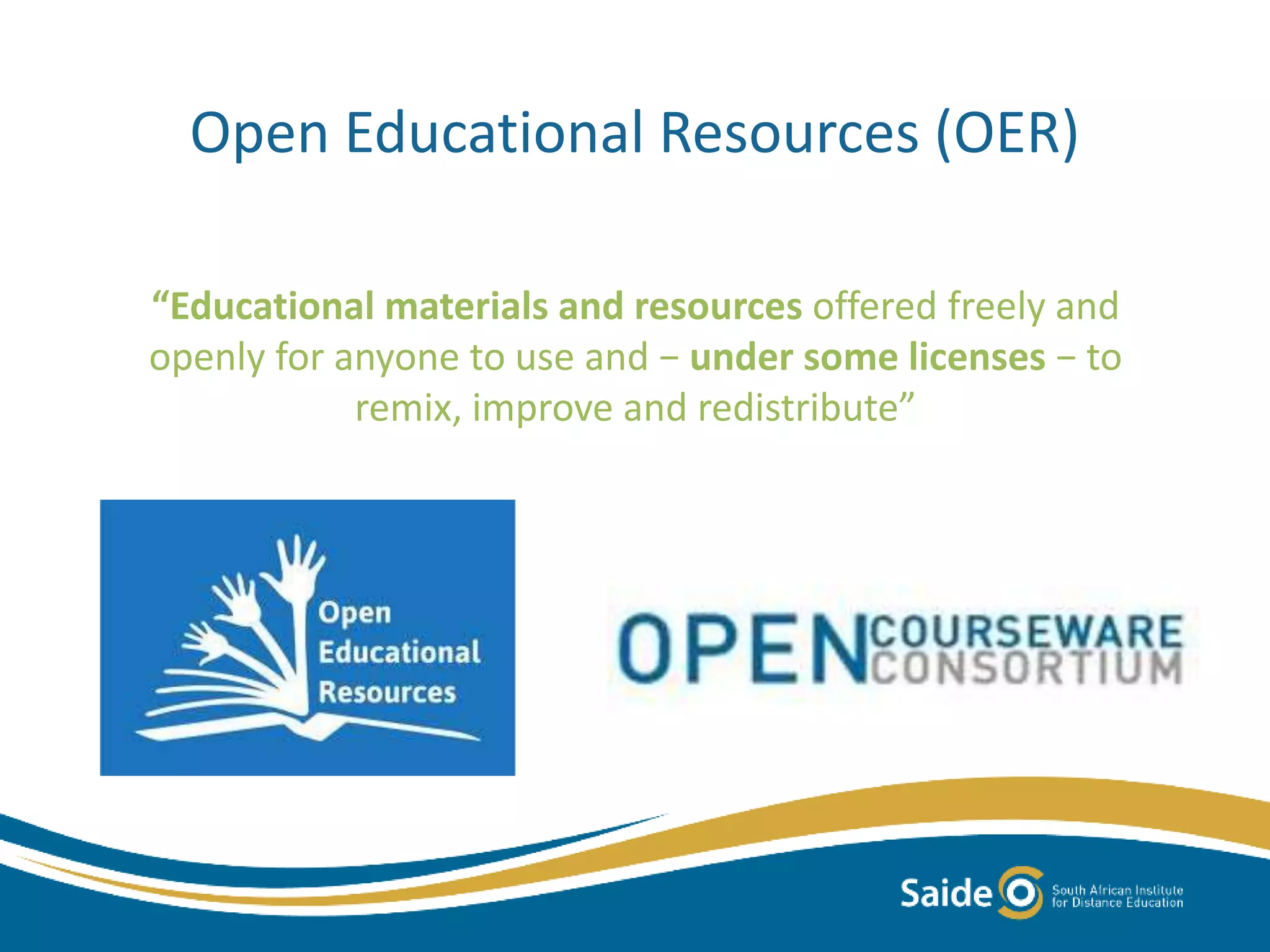
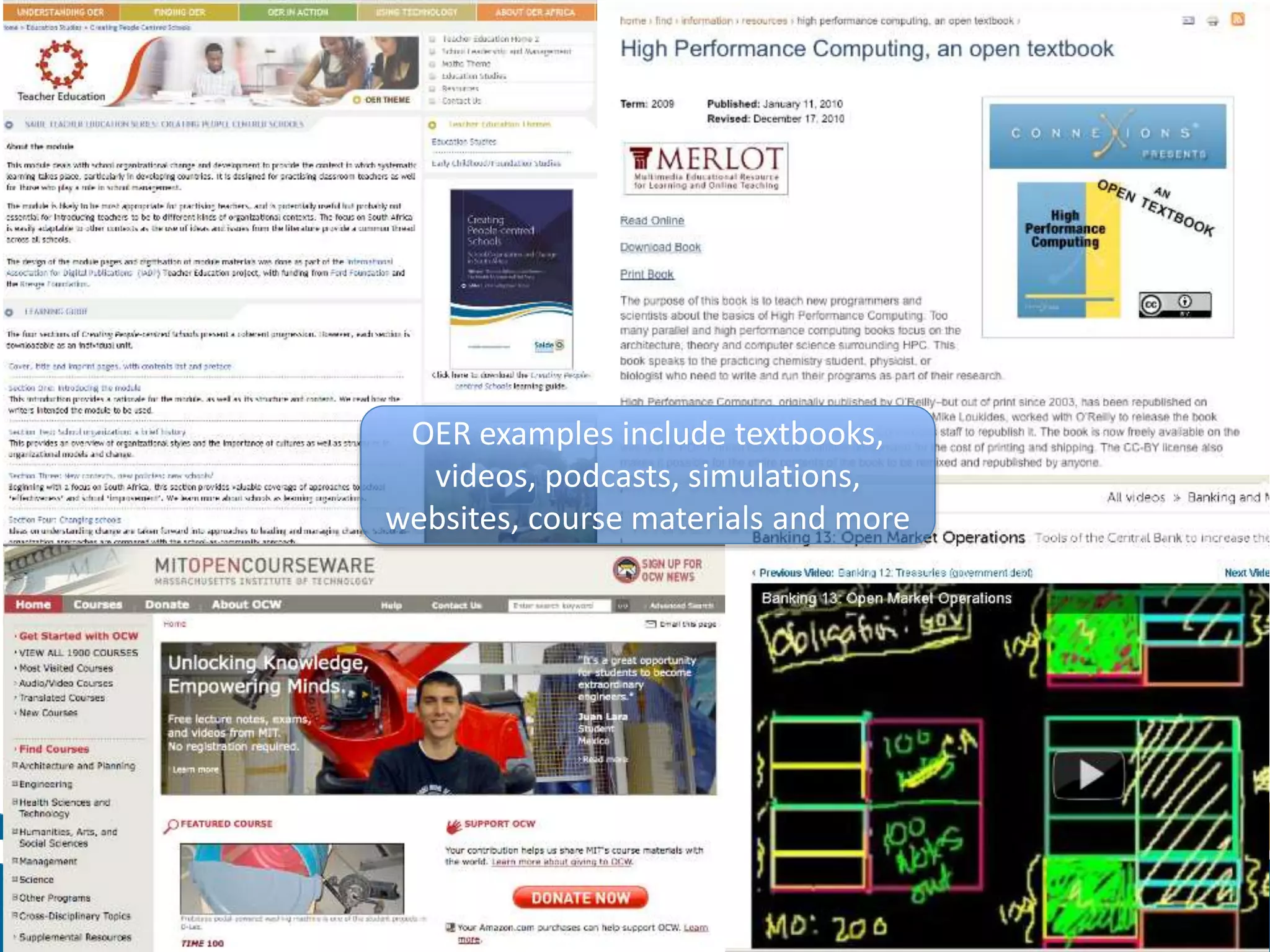
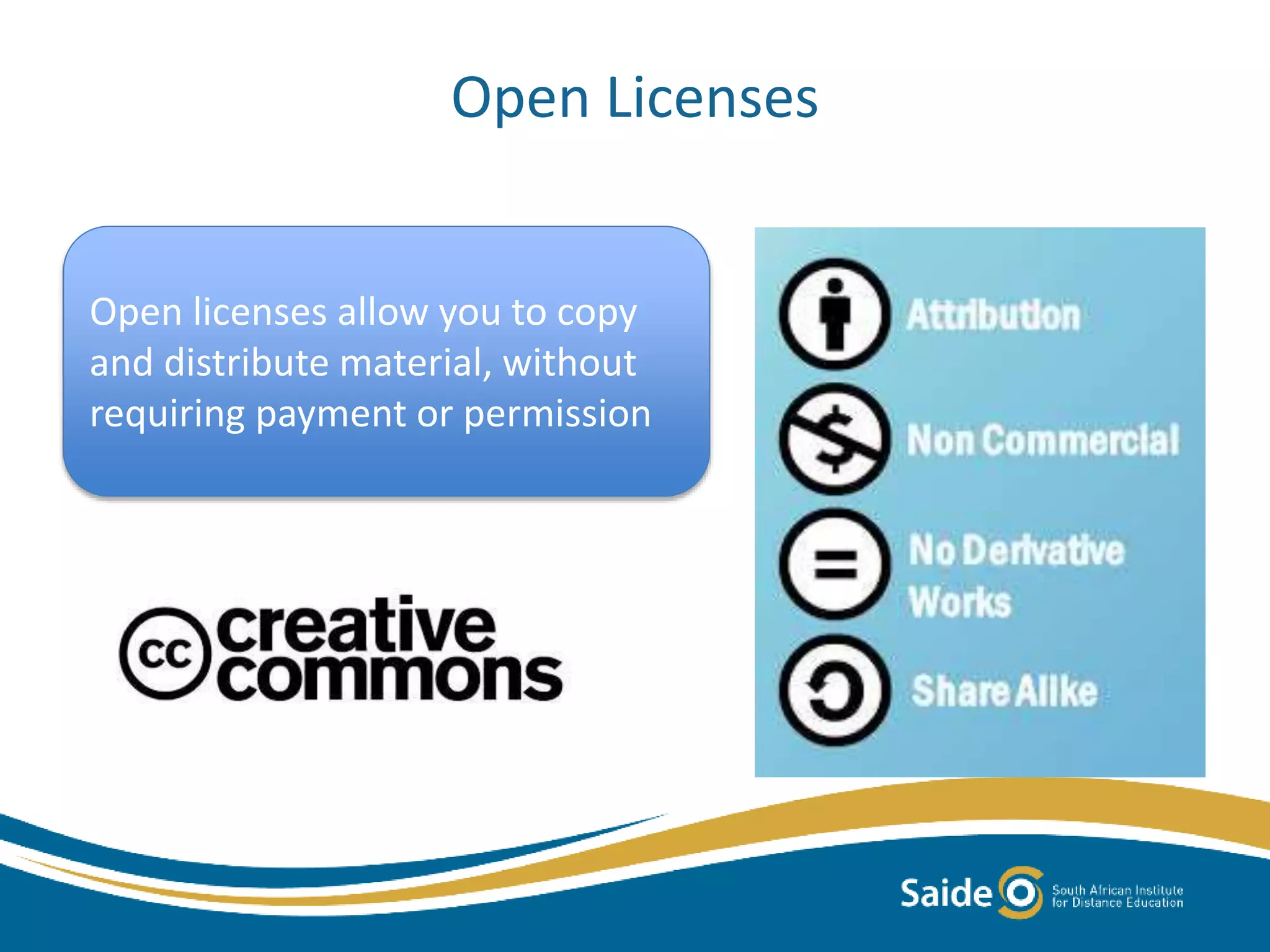
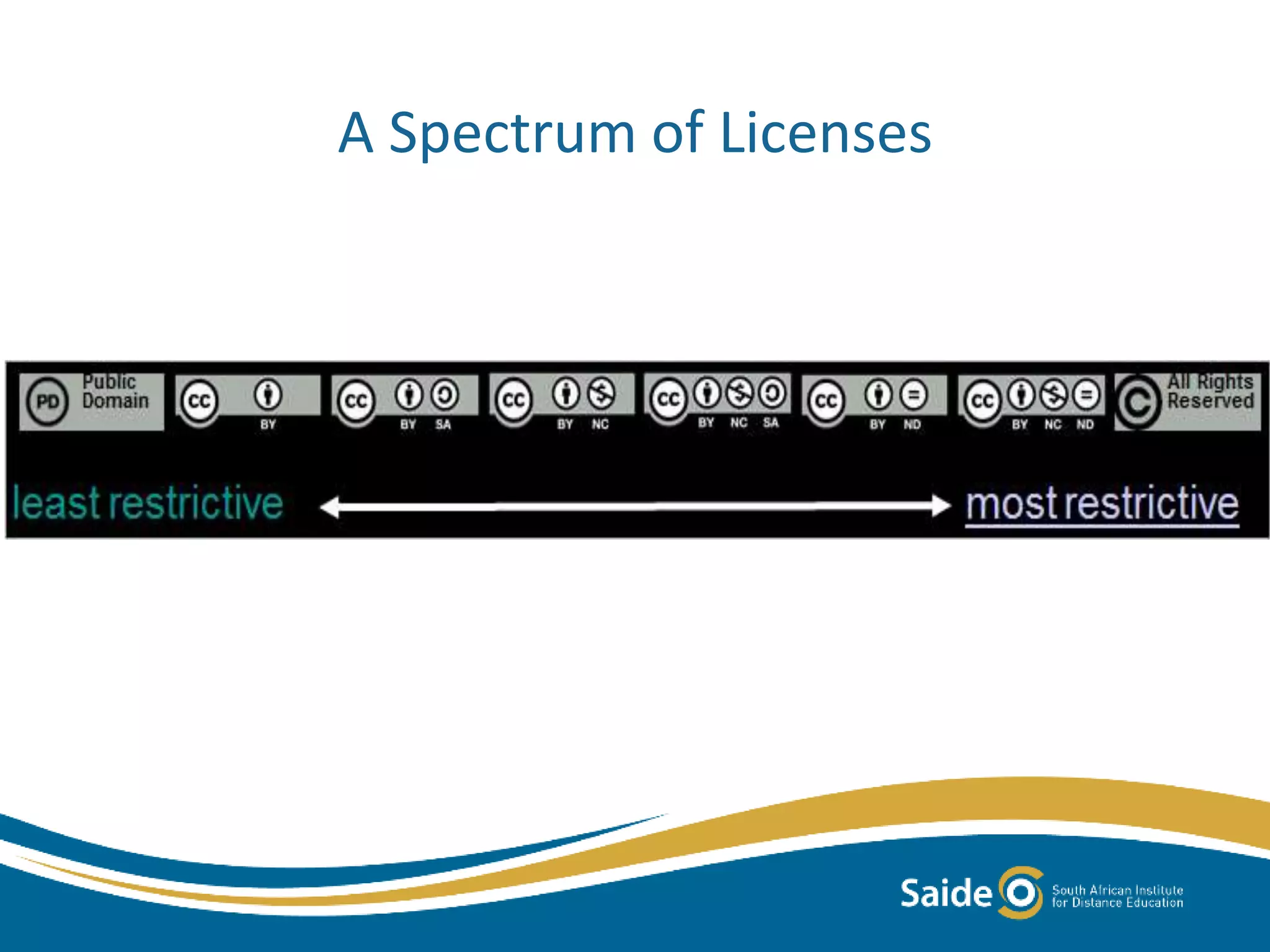
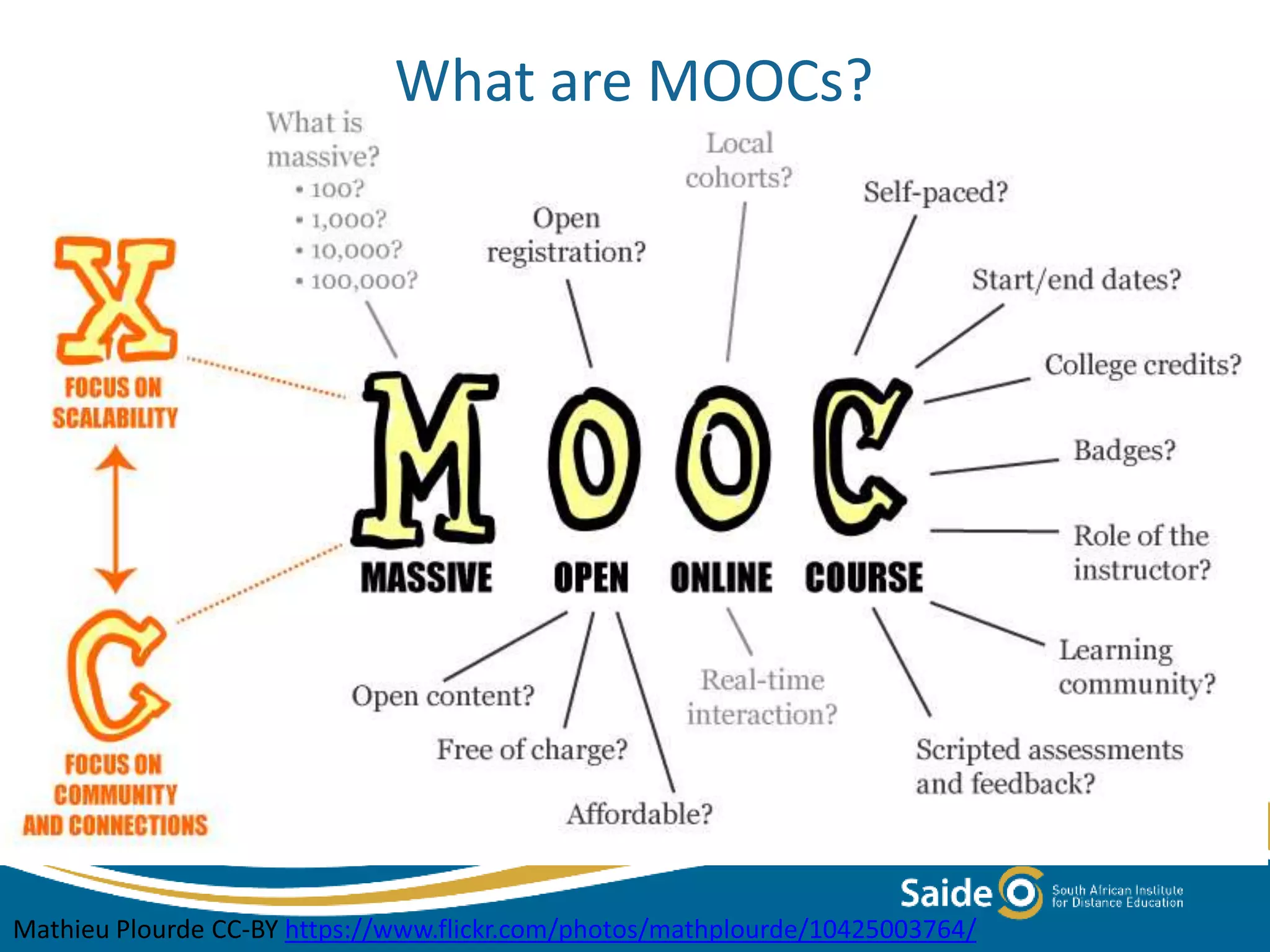
![Introduce fields
and support for
undergraduates
Develop skills and
introduce topics for
postgraduates
Special interest
topics for
postgraduates
Continuing education
and qualifications
Introduce topics with
high-profile presenters
Deacon, A, Small, J and Walji, S (2014) [CC-BY-SA]](https://image.slidesharecdn.com/9xwsjpcrrxz0rscdwjil-140624040656-phpapp01/75/An-Introduction-to-Openness-in-Online-Learning-14-2048.jpg)
![Course Landscape in Higher Education
Deacon, A, Small, J and Walji, S (2014) [CC-BY-SA]](https://image.slidesharecdn.com/9xwsjpcrrxz0rscdwjil-140624040656-phpapp01/75/An-Introduction-to-Openness-in-Online-Learning-15-2048.jpg)
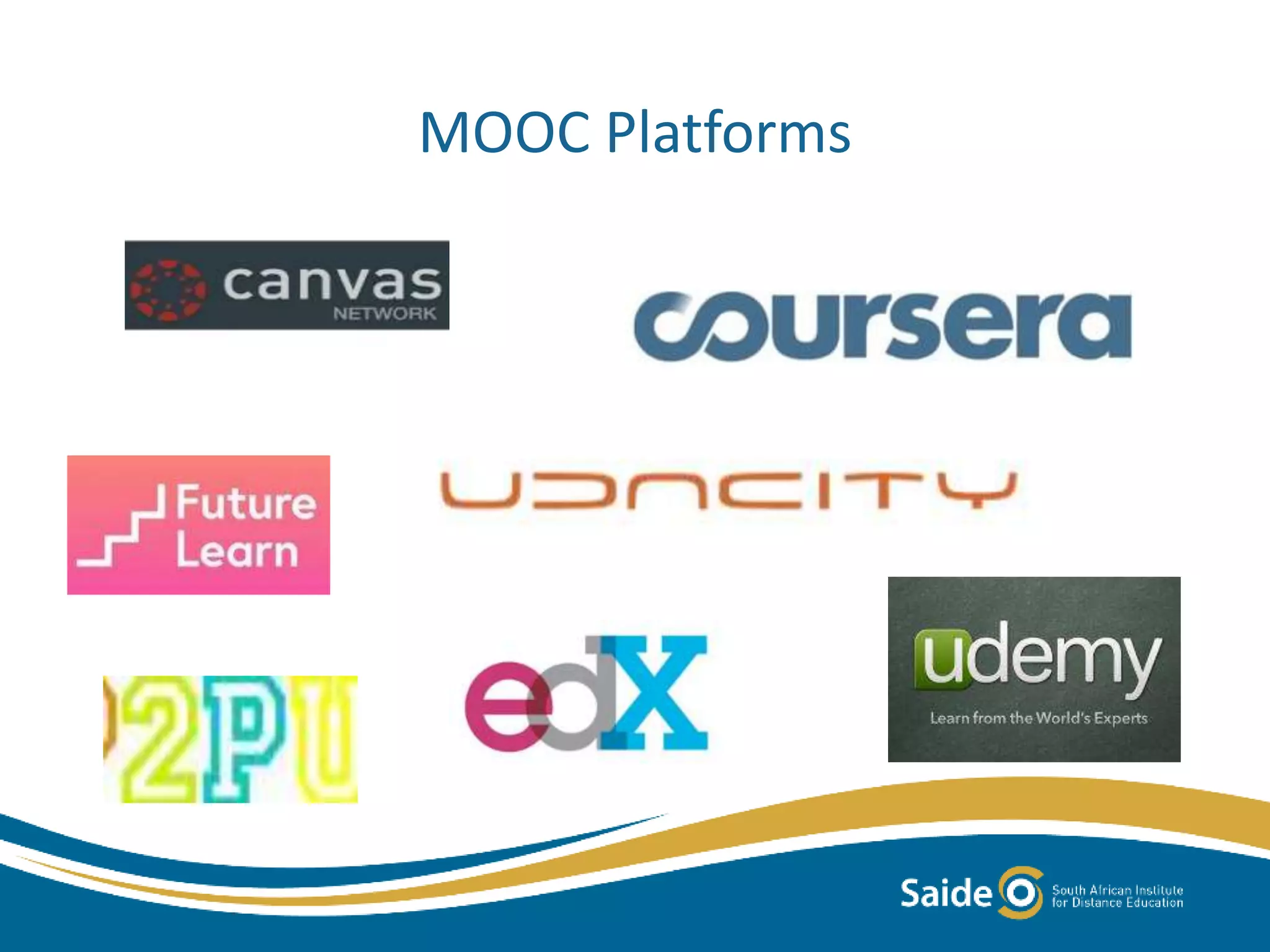
![Free and Open Source Software
• Software
distributed along
with its source code
• Able to use and/or
modify the design
• Low-cost
technology option
• Opportunities for
educationopensource.com [CC-BY-SA] https://www.flickr.com/photos/opensourceway/4624425596/](https://image.slidesharecdn.com/9xwsjpcrrxz0rscdwjil-140624040656-phpapp01/75/An-Introduction-to-Openness-in-Online-Learning-17-2048.jpg)
![Platforms
RSS
Content
Curation
Discussion
Groups
Blog and
Microblog
Social
Networks
Multi-
media
Sharing
Virtual
Meeting
Rooms
Free and Open
Source Tools
Adapted from: Cavazza, Social Media Landscape [CC-BY-NC-SA] http://www.flickr.com/photos/fredcavazza/2564571564/](https://image.slidesharecdn.com/9xwsjpcrrxz0rscdwjil-140624040656-phpapp01/75/An-Introduction-to-Openness-in-Online-Learning-18-2048.jpg)
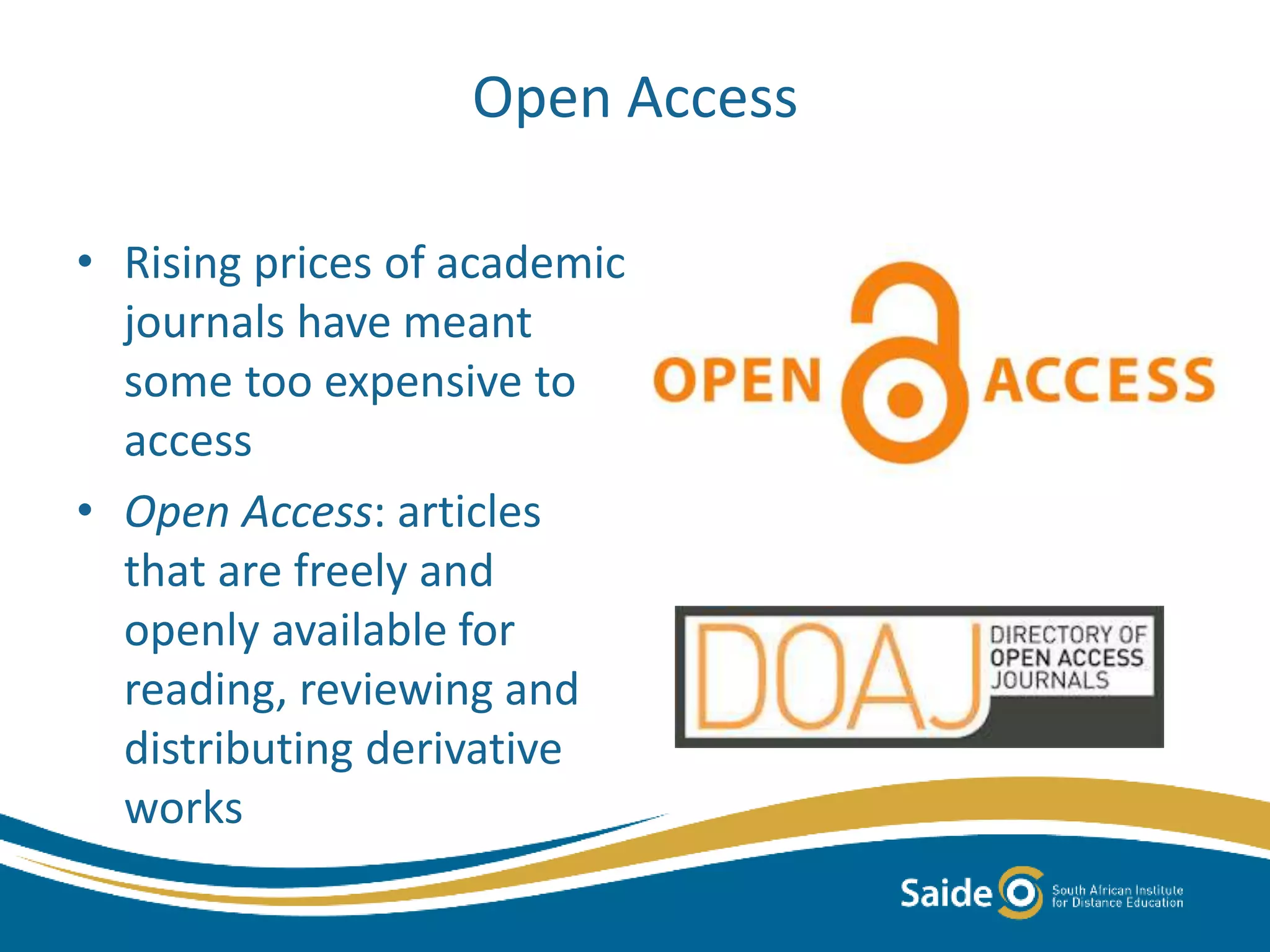
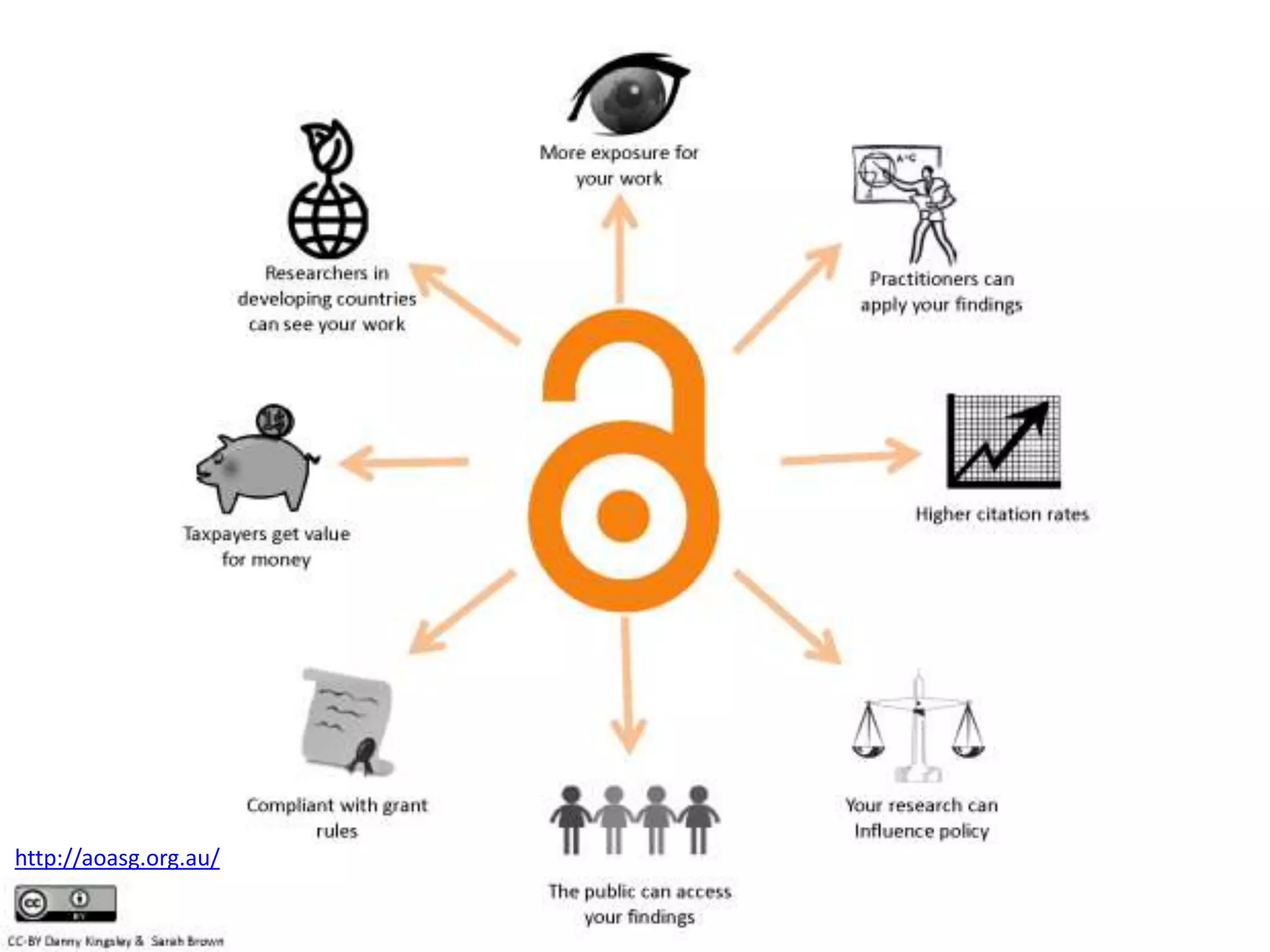
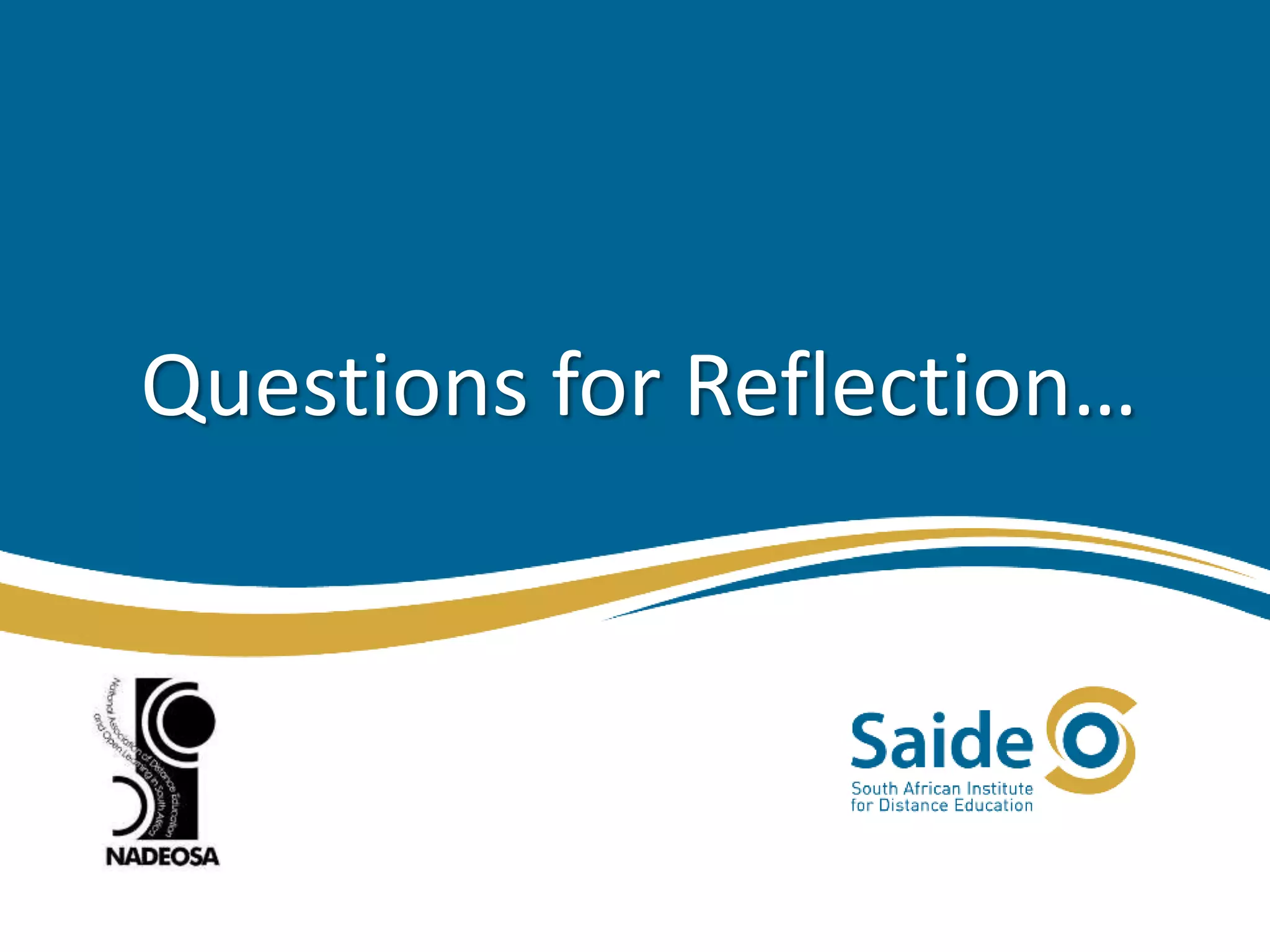

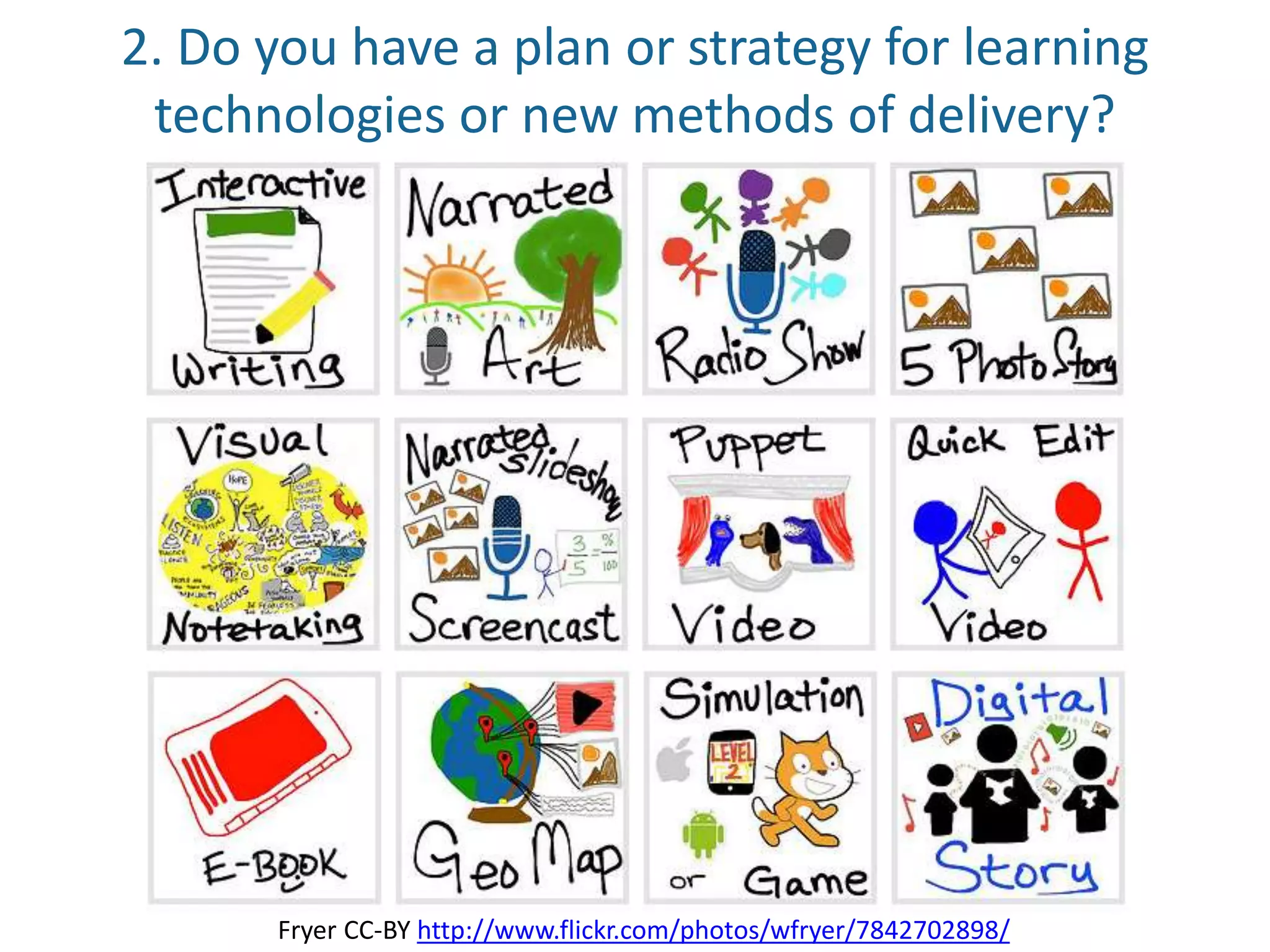
![3. What kind of teachers should we be when
learning is mostly open and online?
Vanguard Visions [CC-BY] https://www.flickr.com/photos/77018488@N03/9315194075/](https://image.slidesharecdn.com/9xwsjpcrrxz0rscdwjil-140624040656-phpapp01/75/An-Introduction-to-Openness-in-Online-Learning-24-2048.jpg)
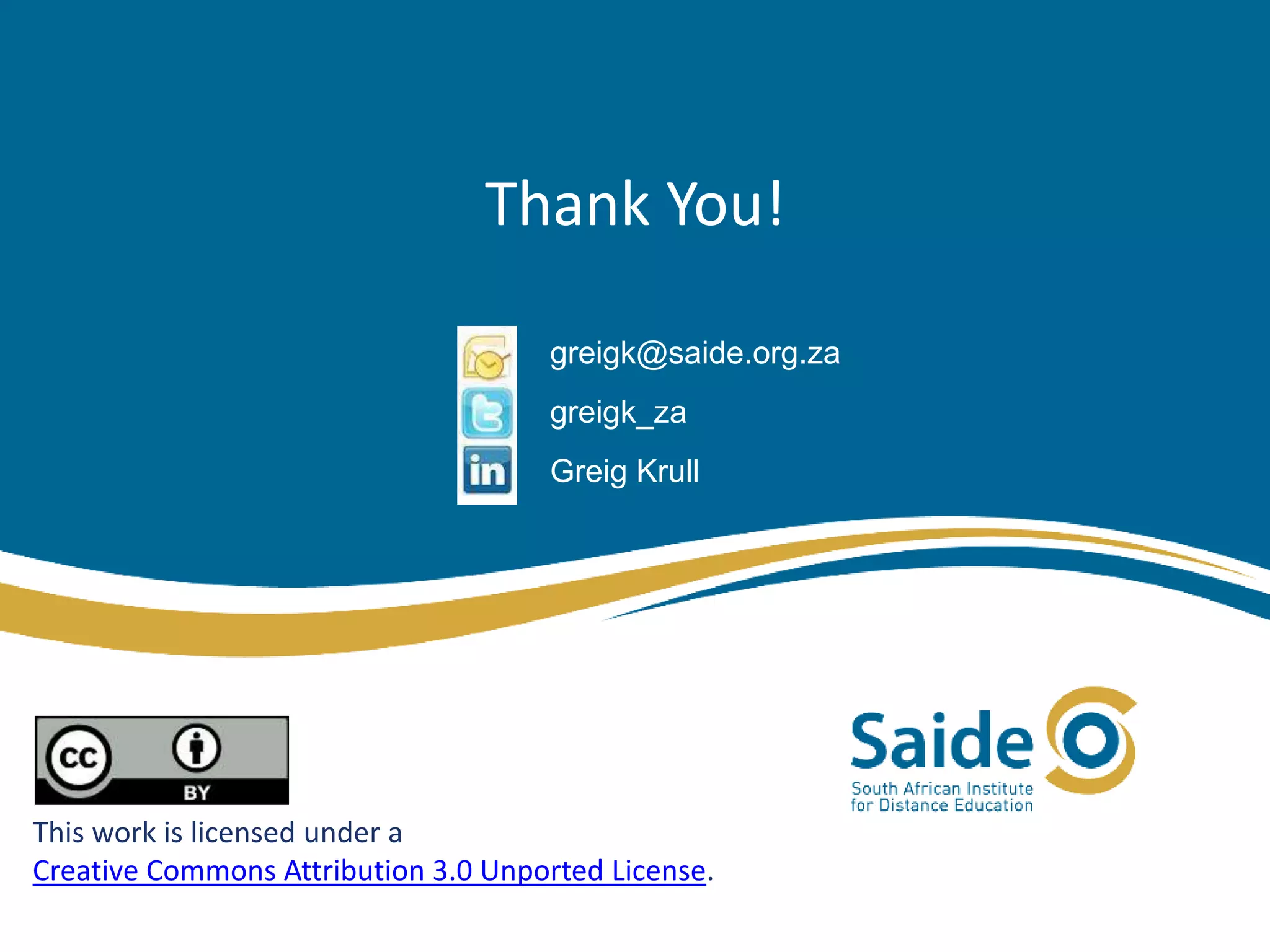
![References
• Bates, T and Sangra, A (2011) Managing Technology in Higher Education: Strategies for
Transforming Teaching and Learning. John Wiley & Sons.
• Butcher, N and Hoosen, S (2014). A Guide to Quality in Post-Traditional Online Higher
Education. Academic Partnerships [CC-BY-SA]
• Czerniewicz, L. 2012. Open Education: Why it matters to South Africa
• Daniel, J (2012). Making Sense of MOOCs: Musings in a Maze of Myth, Paradox and
Possibility. Journal of Interactive Media in Education. [CC-BY]
• Deacon, A, Small, J and Walji, S (2014). Developing World MOOCs: A workshop on
MOOCs in Africa. e/merge Africa. [CC-BY-SA]
• Saide (2012). Empowering Learners through Open Learning. [CC-BY]
http://www.saide.org.za/11-open-learning](https://image.slidesharecdn.com/9xwsjpcrrxz0rscdwjil-140624040656-phpapp01/75/An-Introduction-to-Openness-in-Online-Learning-26-2048.jpg)